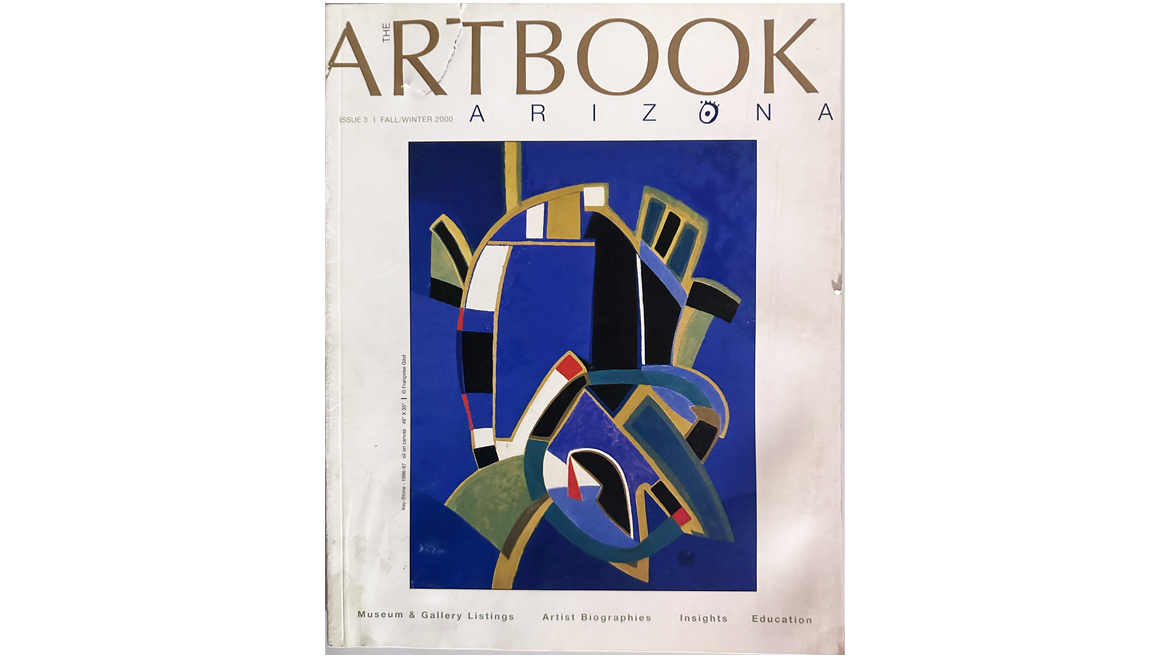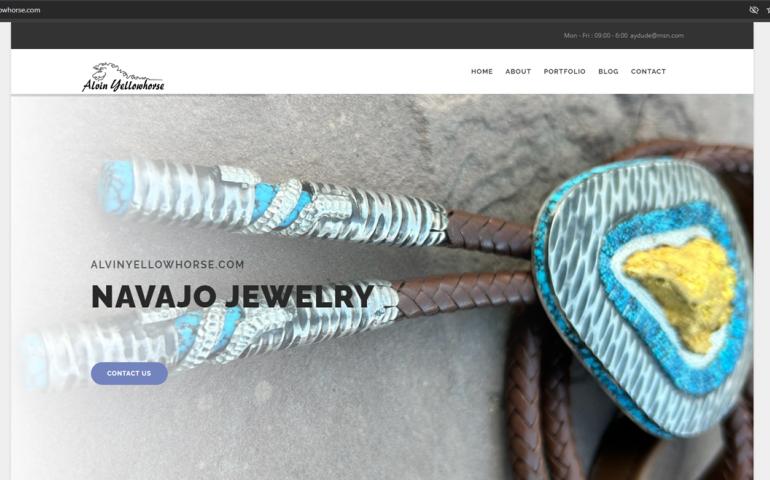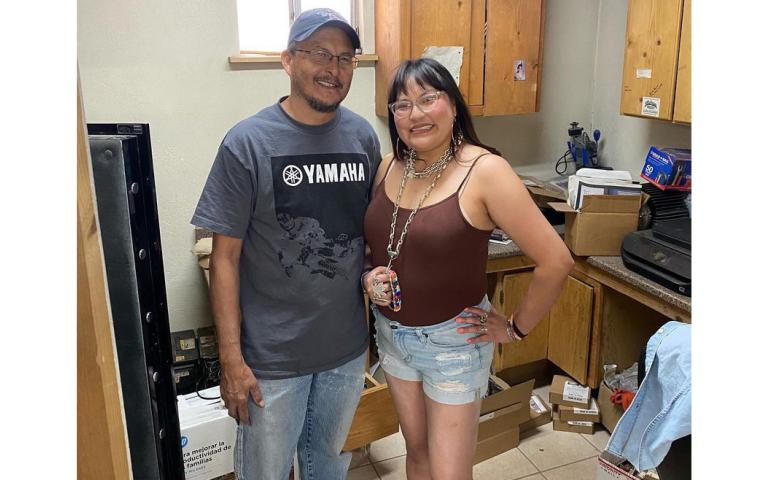The Artbook Artist Biographies
Should Alvin Yellowhorse ever require inspiration, he doesn't have very far to go. The prehistoric petroglyphs of rock-painting ancestors are drawn upon the canyon walls a short walk behind the Lupton, Arizona studio he shares with brother, Brian, in the heart of Navajo Land: "I often walk out here to the petroglyphs and try to imagine their stories to bring life in my pieces." Most artist will build bracelets around a centerpiece supported by identical side designs. I like the eye to track left to right and get a picture story."
A clear example of this is a Silver, wavy-band, colorful inlaid bracelet inspired by an Anasazi petroglyph behind his home that Alvin calls The Day Journey Rock: "The drawer made three mountains, with symbols for Suns between each range. Along the way he encounters, goats, lizards and bear and at the end of his journey is a stick-man figure with an arm raised in victory in arrival at his destination. I have retold his journey in this bracelet."
Although unmistakably contemporary, Yellowhorse Designs are enriched by Anasazi, Hopi and Zuni influences as well as his Native Navajo, and he tries to faithfully represent the original tribal stories that have been passed down the generations. He has a huge file of petroglyphs on his computer from all over the Southwest taken with his digital camera.
Although he works with al the technology a modern inlayer has at his disposal, like diamond wheels and digital cameras, in the nearly quantum world of inlay, too small for clumsy measurements, the artist's eye is his most precise tool: "It is easy to lose yourself while you are working in these intricate inlays." He tries to describe what it was like to build the three-sided cube, his streamlined representation of the traditional Sunface, that floats as the centerpiece surrounded by planets in the deep, Lapis night sky of an elegant link bracelet: "I don't draw out a design beforehand. I pick up a stone and it shows the way."
As the world's supply of Turquoise diminishes, gathering the stones Alvin carefully selects to work into his jewelry is a challenge. The Lapis is from Afghanistan, the Red, Orange and Pink corals from the Mediterranean. The Purple Sugilite stones, a by-product of another mining process, are actually smuggled by African mineworkers onto the International Gem Market: "I use only the expensive stones. Once I found a whole bunch of really rare Blue Gem Mine Turquoise in this old man's attic. I was really excited because you can't get that stuff anymore."
Though the Yellowhorse name is well established in the jewelry business through both sides of his family. Alvin came into the art in his own way. Just out of high school he started job-hunting McDonald's and Burger King, then one day answered an ad at Ray Tracey's inlay studio. He was surprised to find a lot of his former classmates working there. Having learned the Silversmithing basics from his father and mother growing up, Alvin honed his talents at Tracy's studio. It was here that Yellowhorse claimed his muse. He went from there to work for a diamond-setter in Scottsdale, but he credits his father for instilling the idea of being his own boss.
One can still find familiar native storytelling symbols of Pueblos, Shiprocks, Yei, bear paw and Sunfaces in his designs. But there too you may find his night skies a dance with Moons that beckon like new worlds, and comets at the shoulder of an archer Yei. The crisp, flawless inlay his signature--his nature--Alvin Yellowhorse, just entering his thirties, is rapidly gaining recognition as a Vanguard Native American Jeweler who believes there is nothing to fear in folding old into new. At the Santa Fe Indian Market in August, this was validated by his peers, as Alvin received three Blue Ribbons for his works.
Alvin says that "I'm always trying to come up with a new way to design. Right now I'm working on a wavy cornrow inlay that blew away other artist when I showed it to them. I'm also experimenting with beveling the edges of the stones. Then there is this fantastic inlayed fetish bear that took me two and a half months to complete, where I have formed the stone to hold the inlay rather than using the traditional Silver. That's at the Blue-Eyed Bear Gallery in Sedona. You have to go check it out!"
Could the age-old cave painters and petroglyph-makers have imagined in their wildest dreams how successful they would be in communicating their stories, their triumphs, over the millennia? Tell us, Mr. Yellowhorse, as you tramp the dusty canyons and mesas of your ancestral homeland, searching for the ancient past for your creative spirit, do you ever sense that your descendants will proudly wear your beautiful, storied creations when they explore the stars?






